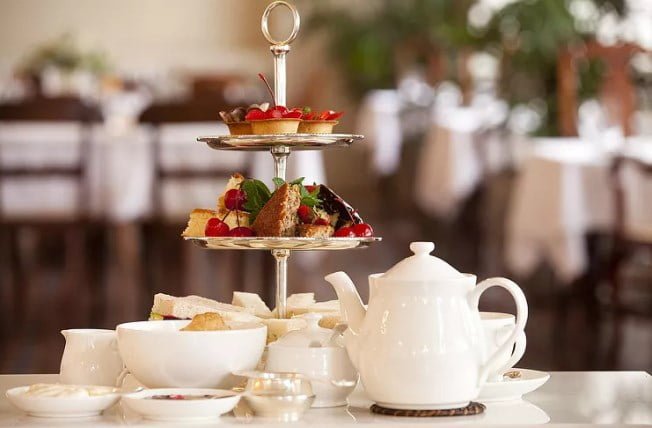There is no more quintessential British ritual than the ceremony and serving of afternoon tea. It is believed that credit for the custom goes to Anna, the 7th Duchess of Bedford in the early 19th century. The usual habit of serving dinner between 8 and 9 pm left the Duchess hungry and with a ‘sinking feeling’ by late afternoon. To stave off the hunger, she would order tea, bread and butter and cakes to be served in her room. Later on, she would invite friends to join her at her home and the light tea was such a success the habit caught on.

The Duchess continued the custom on returning to London and soon the ‘At Home’ tea evolved which quickly spread throughout England. Announcements about tea were sent to relatives and friends stating at what hour the tea would be served. Sometimes entertainment was provided but more often it was simply a conversation and a little idle gossip over tea and cakes. If ‘At Home’ notices were received the guest was expected to attend unless regrets were sent.
The taking of tea gradually spread from the home and out into society in general. Tea Parties became the norm and Tea Rooms, and Tea Gardens quickly sprang up everywhere.
During the Edwardian period, the ‘At Home’ faded as the desire to travel increased. Tea was now served at four o’ clock in the new tea lounges of luxury hotels theRitz being one of the most famous, and high-end stores such as Fortnum and Mason and was often accompanied by light music and sometimes even a little dancing. Tea dances became something of a phenomenon and lasted until well after the Second World War, but then gradually disappeared. Like Afternoon Tea itself, there is now a huge revival of the tea dance throughout the UK and Ireland and being enjoyed by all ages.
The two World Wars radically changed the taking of Afternoon tea, especially with tea rationing continuing into the 50’s but the custom did survive until well into the mid-20th century. However, as the British began their love affair with coffee bars, sadly, Afternoon tea became little more than a morsel of faded British tradition to dangle before tourists.
Whizzing forward to the 21st century though, how come Afternoon tea at the Ritz is now one of the hardest-to-book dining experiences in London? And outside the famous Betty’s Tea Rooms in Yorkshire, queues circle the block. Come three o’clock, up and down the country, hotel dining rooms are full and tables groan under the weight of stands jam-packed with cakes and scones. Teas are back once again and in a big way.
Ironically, it is the economic downturn which began around 2008 that is credited for this revival.
In the duchess’ time, tea neatly filled a gap in the day. Today, the afternoon repast tends both to replace lunch and diminish the need for a large dinner. ‘Stay at Home’ mums use afternoon tea as a way to meet and eat. And, what better way to use up time on a wet, cold ‘staycation’ than a few hours lingering over tea and scones? So fashionable is afternoon tea that brides on a budget are choosing to serve it instead of the formal sit-down meal. And, even Spas around the country are serving Afternoon Tea as part of a spa day out.